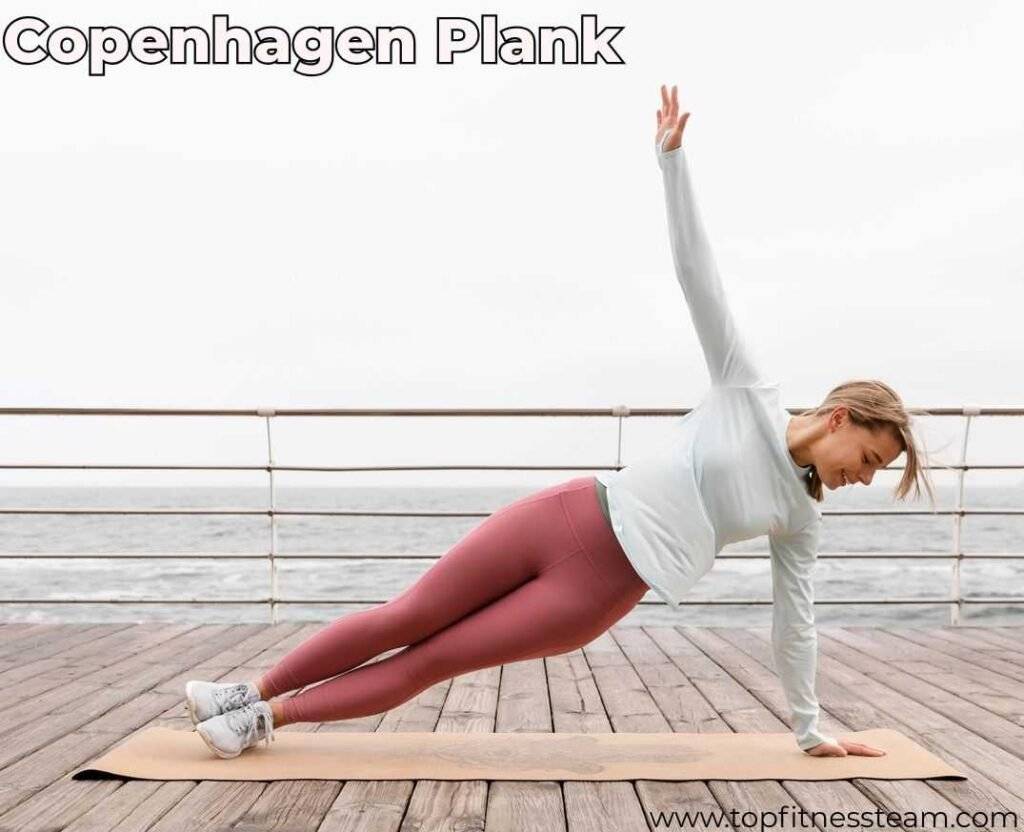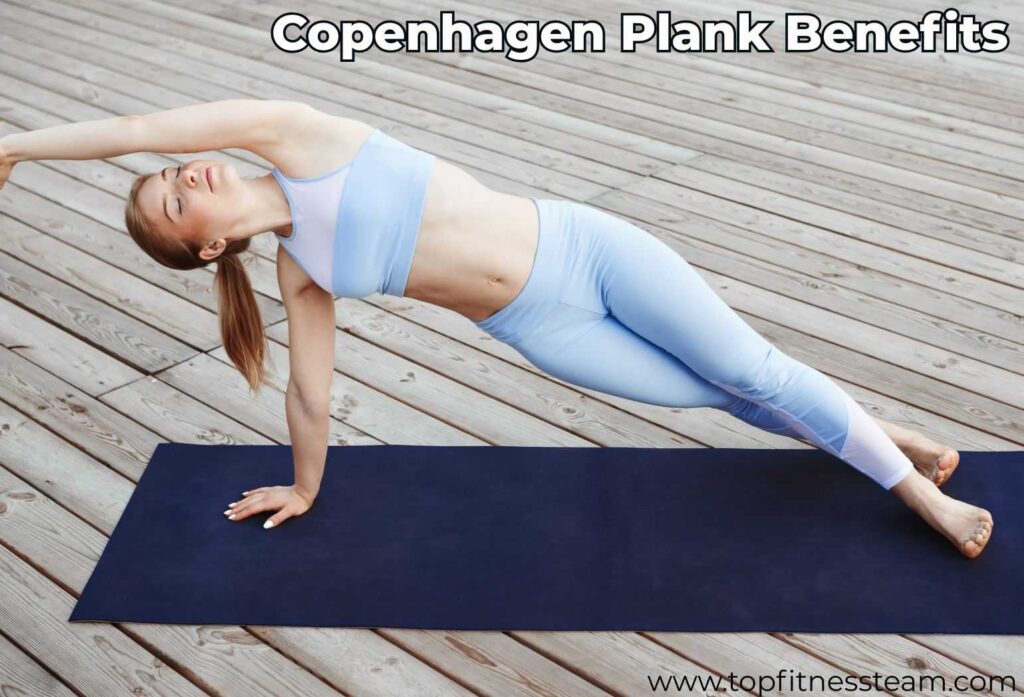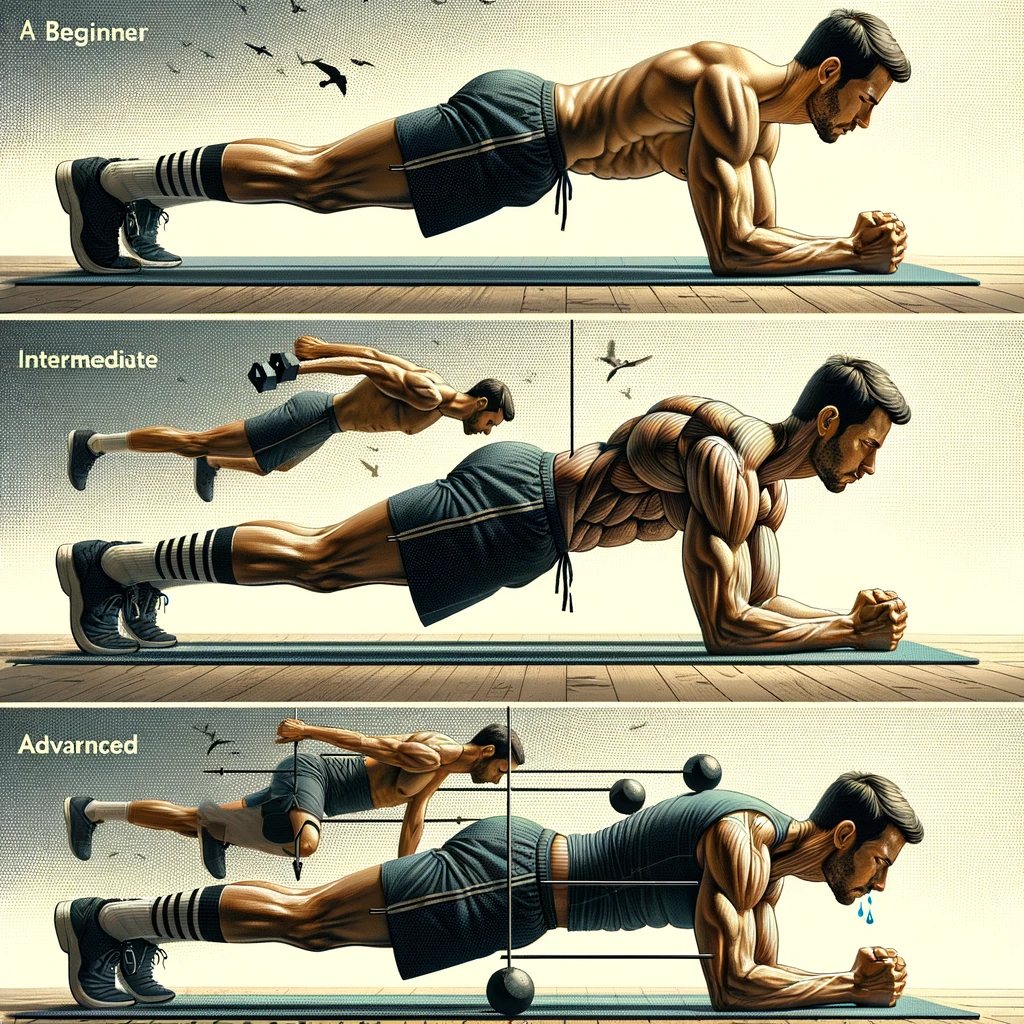
Hello everyone, Top Fitness Team is here. This article will tell you about Copenhagen Planks.
Introduction
The Copenhagen plank, an increasingly popular exercise in fitness circles, is a dynamic twist on the traditional plank position.
Originating from physiotherapy exercises, this exercise has garnered attention for its force in maintaining key muscle groups.
What is a Copenhagen Plank?
At its core, the Copenhagen plank is a raised side plank that primarily targets the adductor muscles of the groin area.
Unlike a standard plank, it involves lifting and holding the top leg on a raised surface, like the top of a bench, while the bottom leg remains suspended in the air.
This unique position works the muscles of the inner thigh and hires the core strength and obliques.
Copenhagen Plank Benefits
The Copenhagen plank is exceptional for maintaining the adductor’s vital muscles in the groin region. Improving core stability contributes to overall balance and postural support.
Athletes, in particular, find this exercise beneficial in improving lateral movements and reducing the risk of groin injuries.
The dynamic nature of the practice also ensures that multiple muscle groups are hired, offering a complete exercise.
Copenhagen Plank Muscles Worked
The Copenhagen plank is a complete exercise targeting multiple muscles. Primarily, it maintains the adductors in the groin, improving inner thigh strength.
Simultaneously, it engages core muscles, including the obliques, for improved stability. This exercise effectively combines core strengthening with targeted leg muscle development.
How to do a Copenhagen Plank
Embark on a journey to improve your core strength and adductor muscle stability with the Copenhagen Plank. This exercise, a variation of the traditional plank, targets critical muscle groups in a unique and challenging way.
Learn the step-by-step method to master this effective workout technique.
Step-by-Step Guide
- Lie on the side, forearm supporting the upper body.
- Boost the top leg onto a bench or platform.
- Keep your bottom leg straight, stopped in the air.
- Provide the body with a straight line.
- Hire core and adductor muscles firmly.
- Maintain position and steady breathing throughout.
- Hold for a specified time or repetitions.
- Repeat on the opposite side for balance.
Pros
Cons
Summary
The Copenhagen plank is a versatile and practical exercise that supports the adductors, improves core stability, and improves overall athletic performance. By understanding its benefits and proper execution, you can safely contain it in your fitness regime.
My Final Thoughts
The Copenhagen plank is more than just an exercise. It is a journey towards better strength and stability. It challenges you to grip your body in a new and dynamic way, pushing your limits and redefining your fitness goals.
Whether an athlete or a fitness lover, the Copenhagen plank is a valuable addition to your workout routine, offering a unique blend of strength and stability training.
Maintain a balanced workout by adding the Copenhagen plank. Visit Crunches Or Planks For Belly Fat on TopFitnessTeam.com for core exercise comparisons. Keep evolving your fitness.
FAQs
Q: What is a Copenhagen Plank suitable for?
Ans: The Copenhagen Plank is excellent for supporting the groin muscles and improving core stability.
Q: What is the Copenhagen exercise used for?
Ans: The Copenhagen exercise targets and strengthens the adductors, core, and obliques, improving athletic performance.
Q: What is the most complex form of a plank?
Ans: Due to its intense core attention, the plank’s most complex form is often considered the RKC (Russian Kettlebell Challenge) Plank.
Q: What is a Copenhagen lift?
Ans: A Copenhagen lift is a variation of the Copenhagen plank, focusing on lifting the suspended leg to hire adductors.
Q: Is Copenhagen plank hard?
Ans: The Copenhagen plank can be challenging, especially for beginners, as it needs significant strength in the core and adductors.
Thanks.

